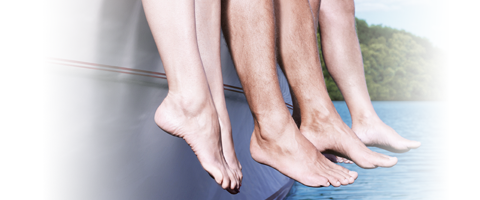Varicose veins are a common disease
Here you will find answers to your questions on varicose veins

Frequently asked questions
What is foam sclerotherapy?
Instead of a liquid sclerosant, foam sclerotherapy involves the injection of special sclerosant foam into the varicose vein. The doctor makes the foam from the liquid sclerosant immediately before giving the injections. Guided by ultrasound images on the screen, the foam is injected into the varicose vein, so that the doctor can clearly see how the foam is distributed in the vein. The foam acts on the vein walls in the same way as liquid sclerosant but it has a somewhat more powerful effect. The blood does not dilute and carry away foam as quickly as it does liquid sclerosant. This is particularly important in large varicose veins, as the foam can act longer on the vein walls.
Using foam generally requires lower concentrations and smaller quantities of sclerosant and treatment goals are achieved more quickly.
Modern foam sclerotherapy has revolutionised the treatment of varicose veins. In the past, sclerotherapy was more or less restricted to small varicose veins, but that has changed completely. The treatment of choice for spider veins is still sclerotherapy with liquid sclerosant but foam sclerotherapy is particularly suited to large varicose veins of the side branch and trunk veins. Foam sclerotherapy offers a good alternative to surgical procedures: In fact, the new National Institute for Health and Care Excellence (NICE) guidelines put foam sclerotherapy clearly ahead of operations for the treatment of trunk veins.
Like sclerotherapy with liquid sclerosant, foam sclerotherapy is virtually painless, minimally invasive, and can be carried out quickly on an outpatient (ambulatory) basis. After foam sclerotherapy, you can resume your normal daily activities immediately and return to work without delay.
